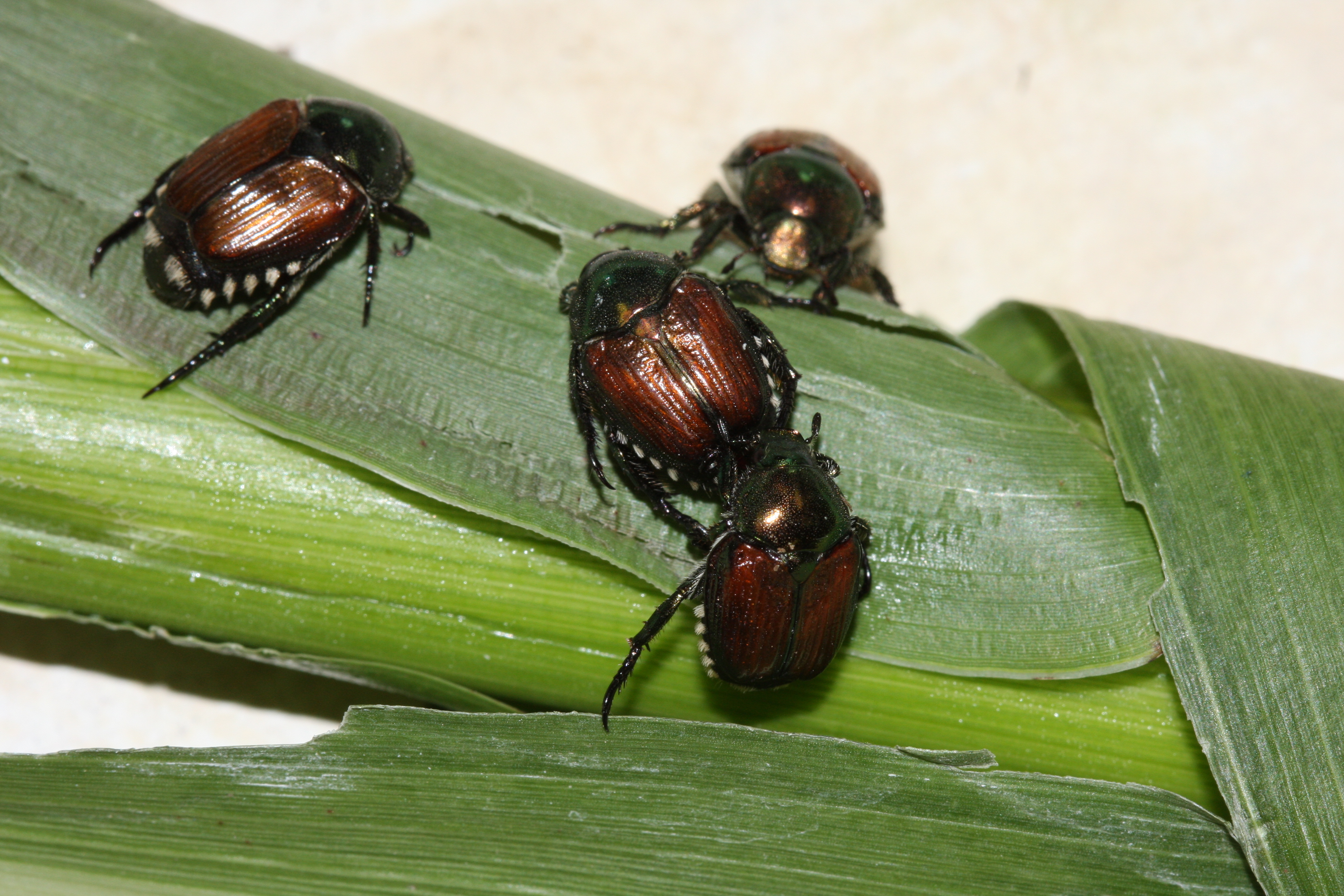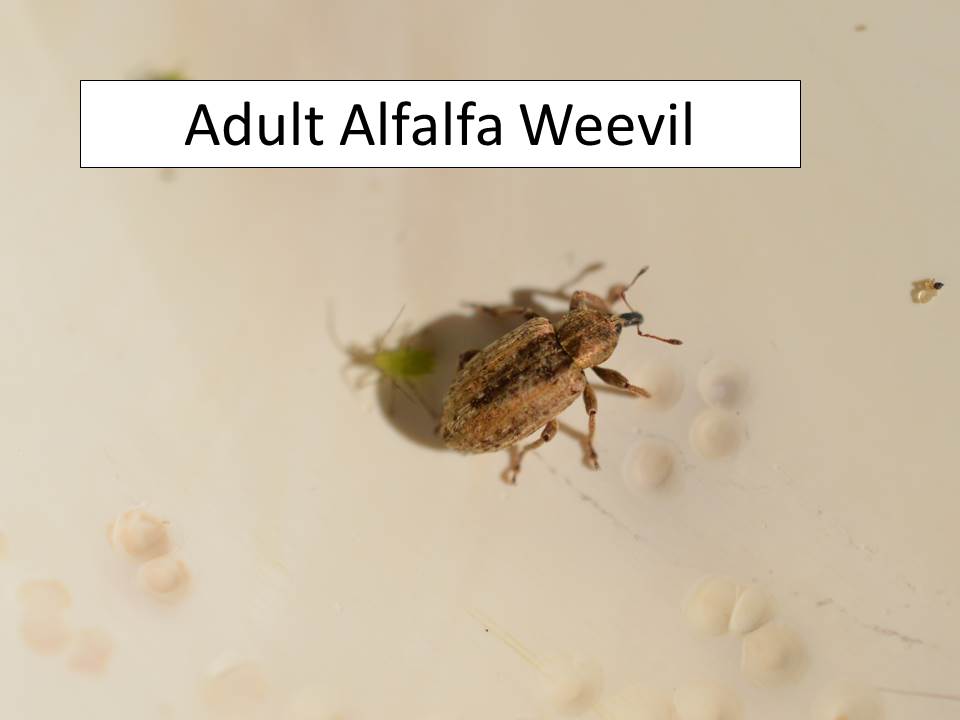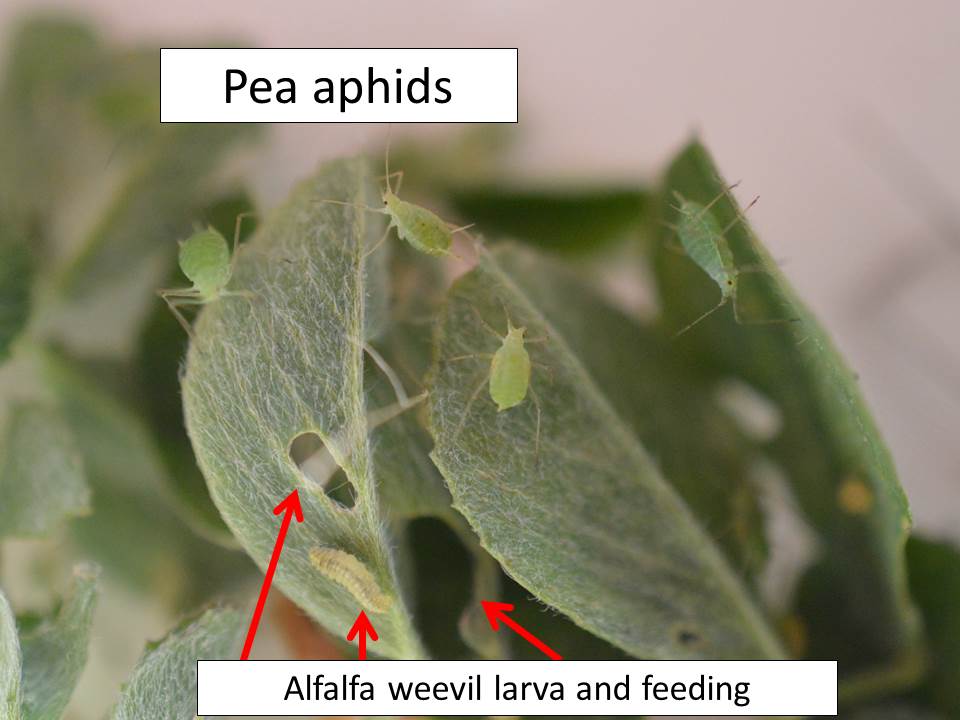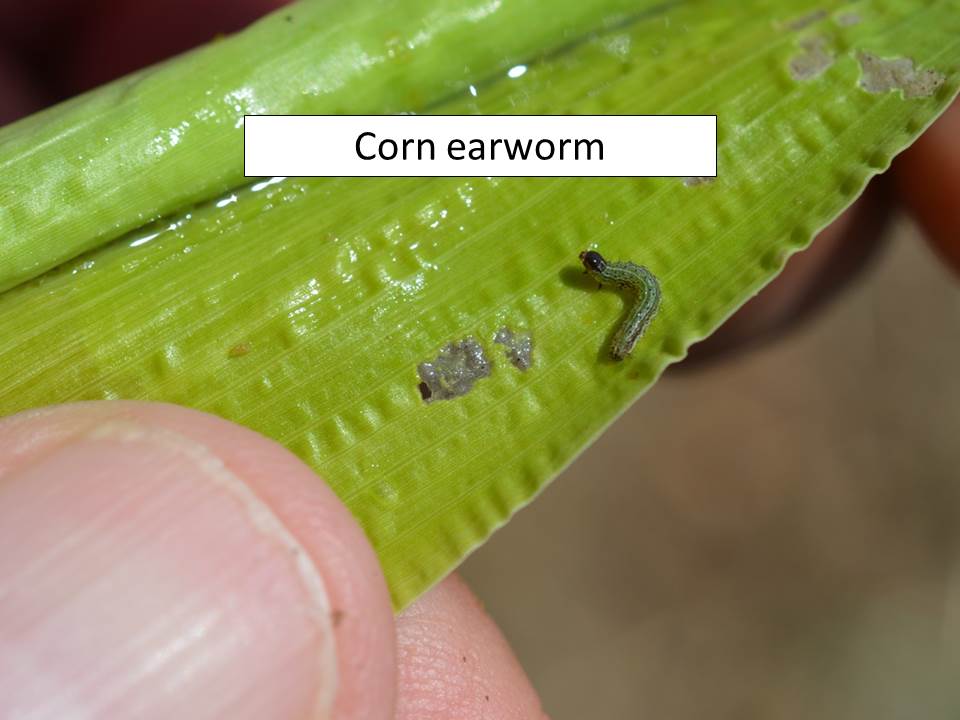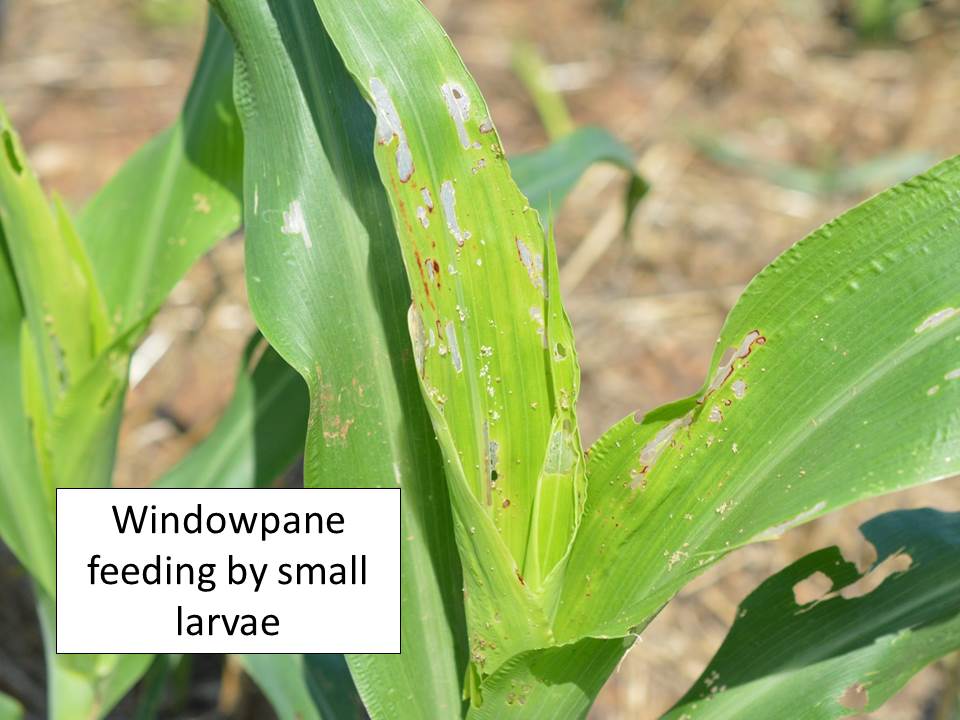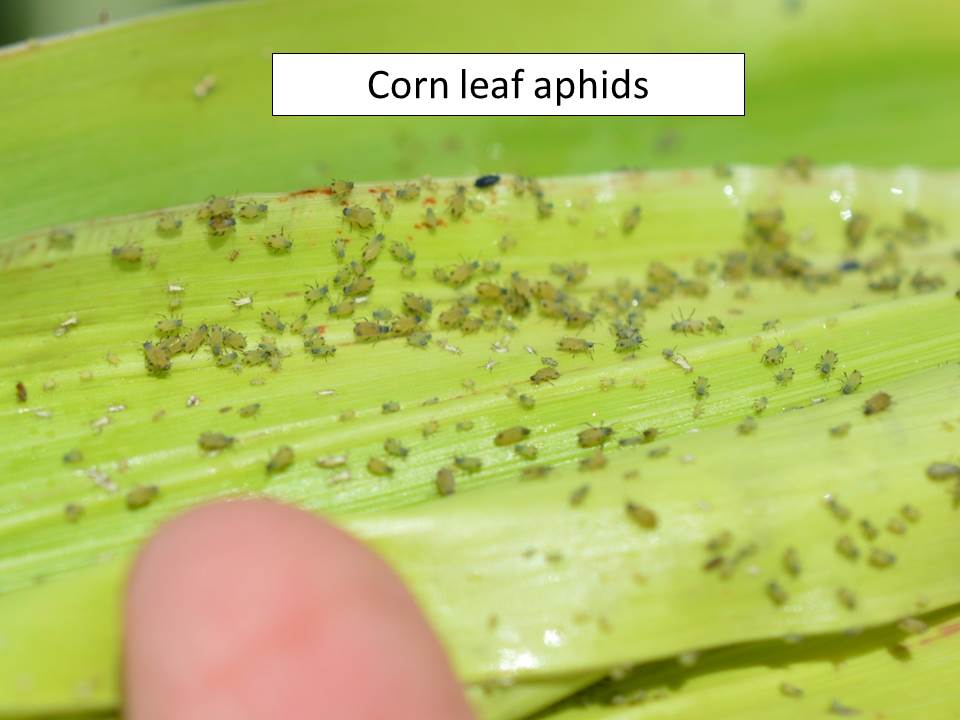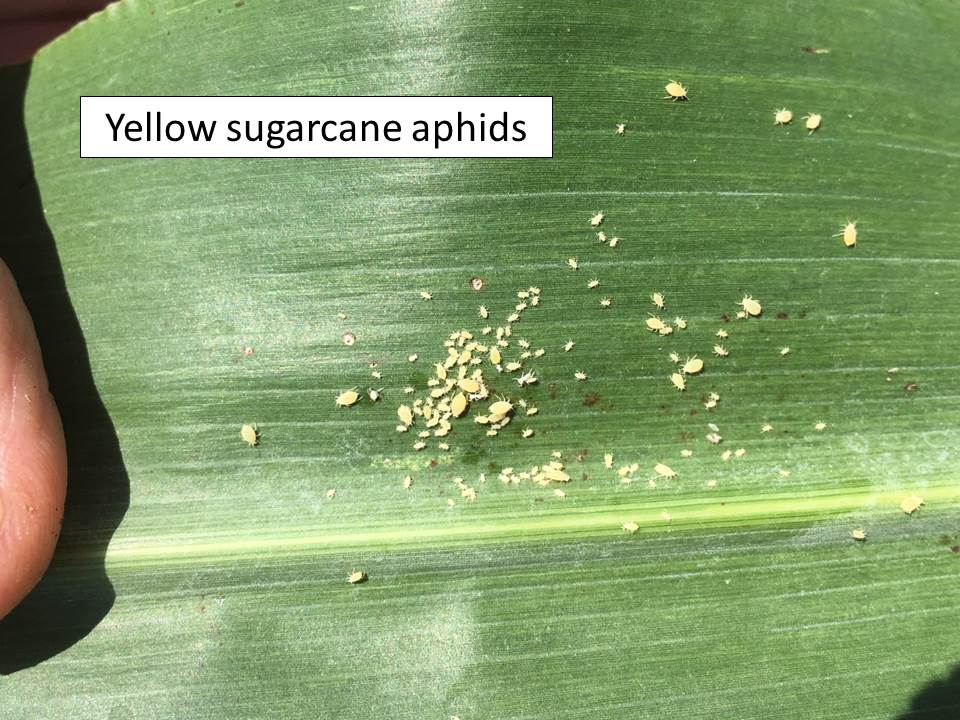— by Dr. Jeff Whitworth and Dr. Holly Schwarting
Adult Japanese beetles have been detected around north central Kansas in the last 7-10 days. These adults may feed on corn, sorghum, and soybean leaves, as far as field crops are concerned, and may cause some “window paneing” much like the leaf feeding of adult corn rootworms. However, this leaf feeding usually is of little consequence. In corn, these beetles will be attracted to the silks and, as they can be very veracious feeders, may clip these silks at a pretty good rate. Fortunately, they are usually localized to small “hot spots” in some fields and thus do not really justify any insecticide application. These adult Japanese beetles may be active for another couple of weeks, after which only eggs and larvae will be present, and these life stages are not a threat to these crops.
